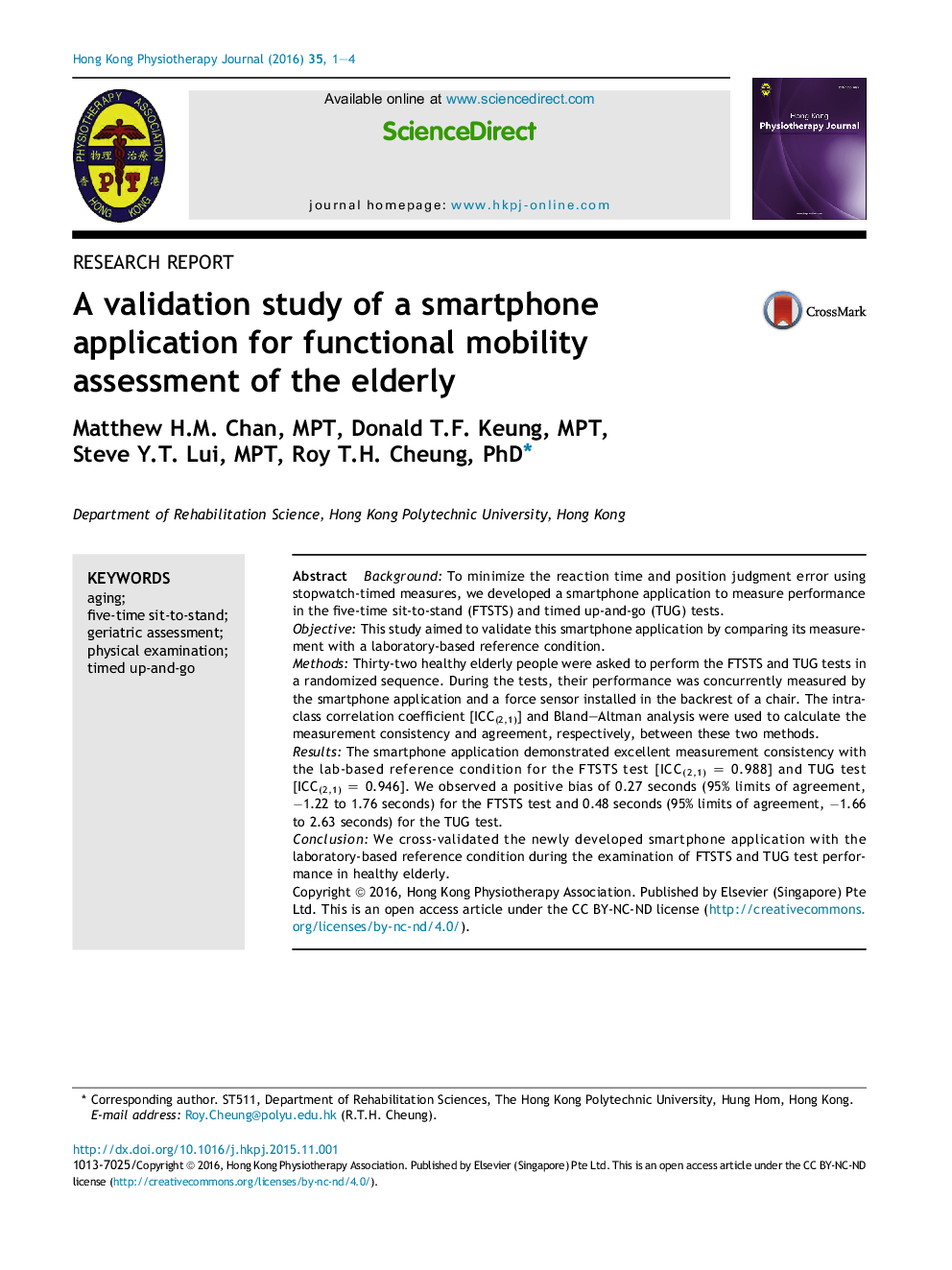| کد مقاله | کد نشریه | سال انتشار | مقاله انگلیسی | نسخه تمام متن |
|---|---|---|---|---|
| 2618323 | 1562976 | 2016 | 4 صفحه PDF | دانلود رایگان |
BackgroundTo minimize the reaction time and position judgment error using stopwatch-timed measures, we developed a smartphone application to measure performance in the five-time sit-to-stand (FTSTS) and timed up-and-go (TUG) tests.ObjectiveThis study aimed to validate this smartphone application by comparing its measurement with a laboratory-based reference condition.MethodsThirty-two healthy elderly people were asked to perform the FTSTS and TUG tests in a randomized sequence. During the tests, their performance was concurrently measured by the smartphone application and a force sensor installed in the backrest of a chair. The intraclass correlation coefficient [ICC(2,1)] and Bland–Altman analysis were used to calculate the measurement consistency and agreement, respectively, between these two methods.ResultsThe smartphone application demonstrated excellent measurement consistency with the lab-based reference condition for the FTSTS test [ICC(2,1) = 0.988] and TUG test [ICC(2,1) = 0.946]. We observed a positive bias of 0.27 seconds (95% limits of agreement, −1.22 to 1.76 seconds) for the FTSTS test and 0.48 seconds (95% limits of agreement, −1.66 to 2.63 seconds) for the TUG test.ConclusionWe cross-validated the newly developed smartphone application with the laboratory-based reference condition during the examination of FTSTS and TUG test performance in healthy elderly.
Journal: Hong Kong Physiotherapy Journal - Volume 35, December 2016, Pages 1–4
